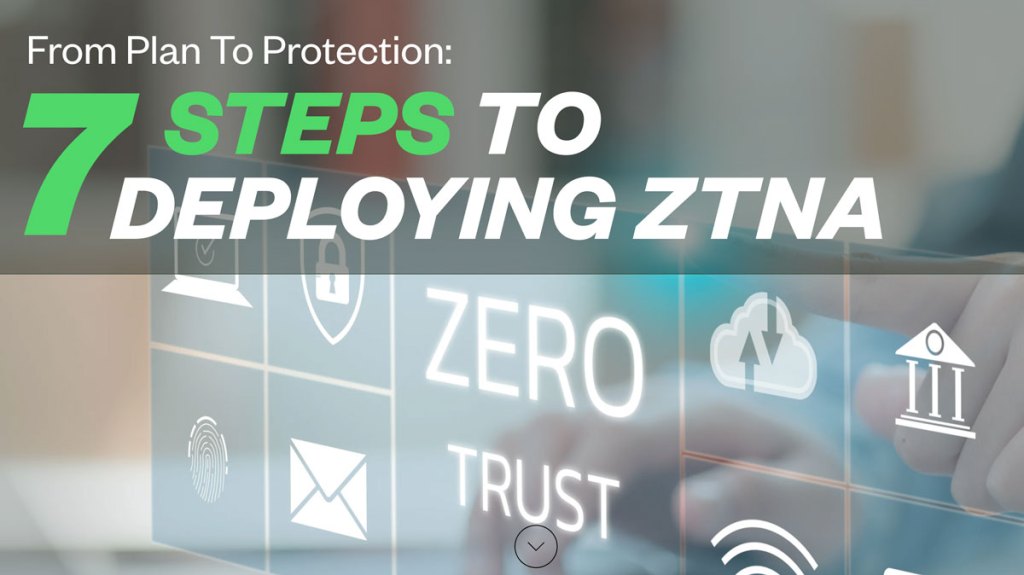Guide
From Plan to Protection: 7 Steps to Deploying ZTNA
SHARE
Rethink Remote Access Before It Slows You Down
When users connect from everywhere-and threats come from anywhere-traditional access models stop working. It's no longer enough to secure the perimeter or trust a login. You need dynamic access controls that adapt to the way your teams actually work.
ZTNA brings that control. But most deployments never make it past the pilot.
Why Many ZTNA Projects Stall
It’s not the technology. It’s the rollout.
Many organizations begin with broad ambitions: "Zero Trust everything." Then internal friction sets in. Business units resist new restrictions. Security teams face pushback over user experience. Integration gaps surface between tools already in place. Suddenly, a promising initiative loses momentum-and the risk it aimed to reduce remains.
This guide is built for that moment. It lays out a real-world, operationally grounded approach to getting ZTNA off the ground-and making sure it scales.
Why This Guide Matters Now
- Aligns Zero Trust principles with actual business goals
- Frames access control as an operational shift, not a technology rip-and-replace
- Shows how to sequence deployment for faster wins and broader buy-in
Who Should Use This Guide
Why It’s Different
You won't find broad promises or conceptual frameworks here. Instead, the guide outlines seven focused steps-from scoping and segmentation to validation and results framing-that reflect how real teams actually roll out secure access. Each one helps reduce resistance, improve alignment, and build lasting traction.
It’s backed by insights from enterprise deployments, structured around business outcomes, and informed by what causes most initiatives to stall in the first place.
FAQs
Is this guide technical or strategic?
It’s operational. It helps you turn Zero Trust principles into a workable plan that fits your infrastructure, workforce, and business goals.
Does this apply even if we already have SD-WAN?
What if we’re not ready to replace VPNs?
You don’t have to. The guide outlines how to use ZTNA to complement—rather than replace—your current tools.
We’re short-staffed. Is this still doable?
How does this help with compliance?
By promoting identity-aware access and reducing lateral movement, ZTNA helps enforce granular policies across sensitive data environments.
Why Download Now
Misaligned ZTNA projects can increase-not reduce-risk. This helps you course-correct.
Many organizations delay deployment due to internal pushback. This guide shows how to prevent that.
Business stakeholders care about outcomes, not architectures. Learn how to frame wins that drive support.

Industry Insights
White Paper
Guide
SHARE Rethink Remote Access Before It Slows You Down When users connect from everywhere—and threats come from anywhere—traditional...
Guide
SHARE Build the Network That Moves with You When expansion demands speed, your network should support it. Whether...
Guide
SHARE Secure Growth Starts with a Unified Foundation When every new site, vendor, and cloud platform adds risk,...
White Paper
White Paper
White Paper
White Paper
White Paper
Webinar
Get the 7-Step Guide to ZTNA Deployment
Learn how to avoid rollout roadblocks and build a scalable Zero Trust access model that works across your enterprise.
Our Gartner Rating
Global WAN Services

 EN
EN








